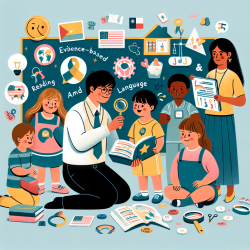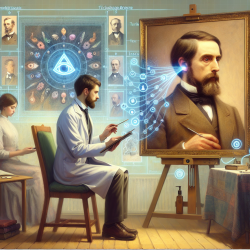Speech-language pathologists (SLPs) play a crucial role in addressing communication disorders, and their partnership with the field of audiology is vital for delivering comprehensive care. The intersection of these disciplines offers a robust framework for understanding and treating a wide range of auditory and speech-language disorders. Drawing insights from the research article "Practical Audiology for Speech-Language Therapists" by Janet Doyle, this blog post aims to help practitioners improve their skills by implementing the outcomes of the presented research or by encouraging them to delve further into this important area.
The book underscores the fundamental link between audiology and speech-language pathology, emphasizing that basic audiological knowledge is imperative for SLPs to adequately assess and treat clients with communication impairments. Doyle provides SLPs with information that assists in making clinical decisions, highlighting the relevance of basic audiology knowledge and keeping in mind the practical information needs of the clinician.
Here are several ways SLPs can enhance their practice through insights from audiology:
- Understanding Audiograms: One of the most direct applications of audiology for SLPs is the interpretation of audiograms. Doyle's four-step procedure for understanding dB HL audiograms can guide SLPs in basic interpretations of their clients' audiograms, enabling them to tailor therapy more effectively.
- Hearing Loss and Speech Perception: Knowledge about the different forms of hearing loss and their effects on speech perception and language development can inform SLPs' therapeutic approaches, ensuring they are adapted to the specific needs of their clients.
- Hearing Screening and Middle-Ear Function: Doyle discusses the importance of hearing screening and the SLP's role in this process. Understanding procedural problems in hearing screenings and their solutions can empower SLPs to identify potential hearing issues that may impact communication.
- Cochlear Implants and Assistive Listening Devices: With technological advancements in audiology, SLPs must be familiar with cochlear implants, assistive listening devices, and their implications for therapy. This knowledge is crucial for SLPs working with clients who use these devices.
- Central Auditory Processing Disorder (CAPD): Doyle's detailed overview of CAPD offers valuable insights for SLPs, including comprehensive information on the disorder, appropriate tests, and management techniques. Recognizing the "red flags" of CAPD can enhance the SLP's ability to support clients with this complex disorder.
Doyle's work also emphasizes the practical application of audiology principles in speech-language pathology. From practical diagrams and charts that aid in understanding audiological concepts to sections on "Clinical Decisions for the Speech-Language Therapist," the book serves as an efficient precursor to further research and specialization for SLPs. Additionally, the inclusion of realistic case examples and summaries of key points at the end of each chapter helps to relate the information directly to clinical settings.
SLPs specializing in particular areas may find that further reading is required to fully grasp the complexities of audiology as it relates to their practice. However, Doyle's book acts as a foundational resource that can significantly enhance the SLP's knowledge base, making it an indispensable tool for those seeking to bridge the gap between audiology and speech-language pathology.
Integrating audiology into speech-language pathology practice not only enriches the SLP's understanding of communication disorders but also enhances their ability to develop more effective treatment plans. By embracing the insights offered by audiology, SLPs can provide more holistic care to their clients, ultimately leading to better outcomes.
For SLPs and other professionals looking to deepen their understanding of the intersection between audiology and speech-language pathology, Doyle's "Practical Audiology for Speech-Language Therapists" is a must-read. Its practical approach and comprehensive coverage of relevant topics make it a valuable addition to any clinician's library.
To read the original research paper, please follow this link: Practical Audiology for Speech-Language Therapists.










